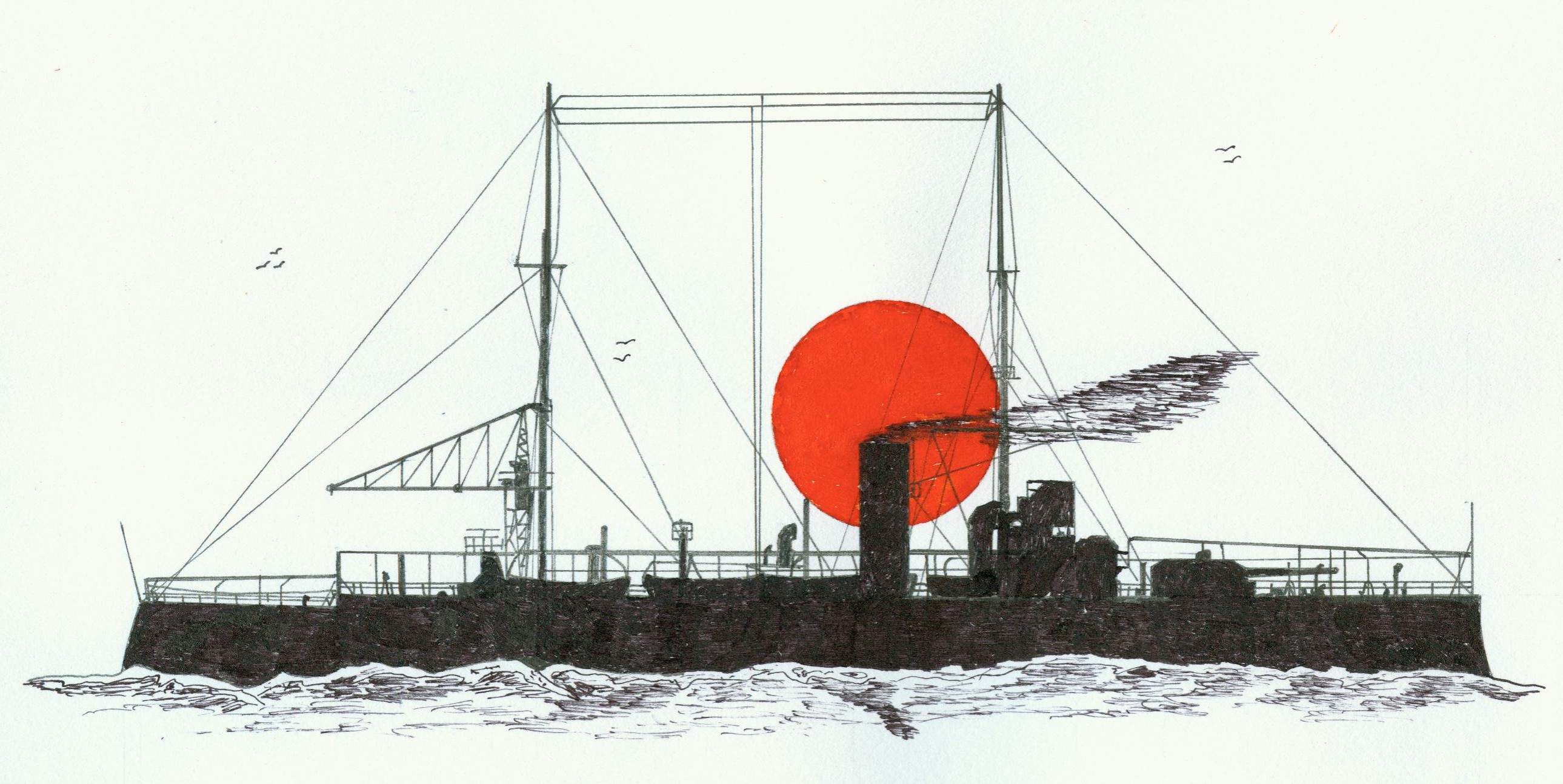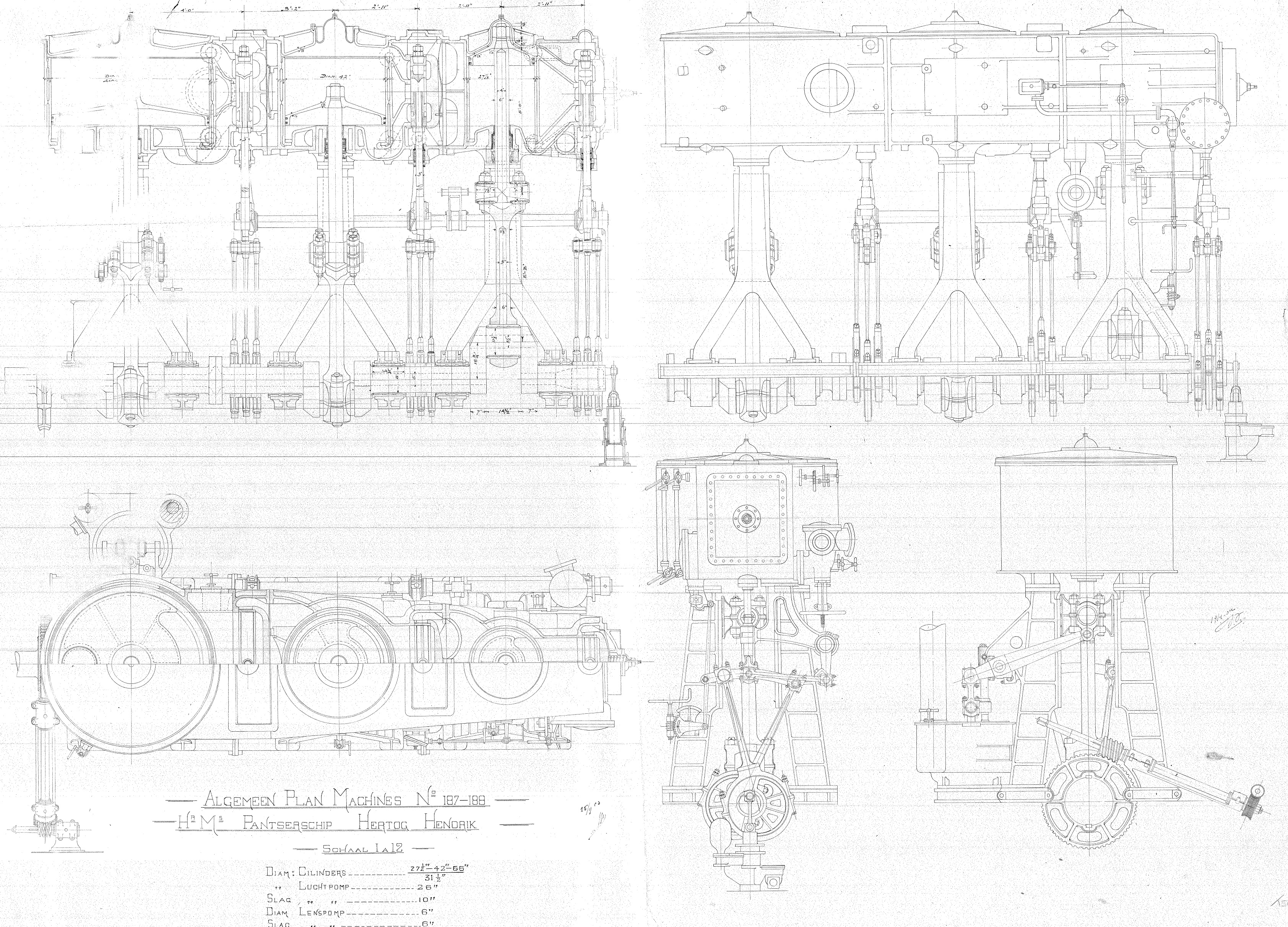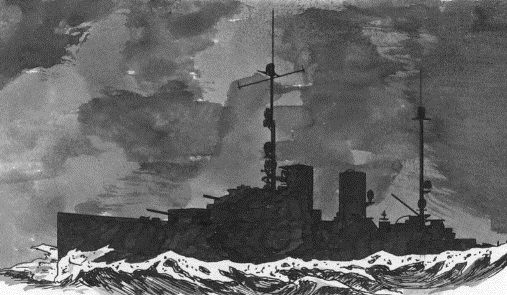Hertog Hendrik. Drawing Ron van Maanen
CC-BY-SA Gemeentearchief Vlissingen-Archief Machinefabriek/Ketelmakerij De Schelde Kon.Mij. De Schelde 1876-1938 inv.nr.306.
Java. Drawing Ron van Maanen
Another Dutch newspaper Algemeen Handelsblad dated 23 May supplied the names of the other Dutch ships, namely the torpedo boats Hr.Ms. Z5-8 and the submarines O 10 en O 11.
Notes
1.On stocks at the navy yard at Amsterdam 13 October 1900 and launched 7 June 1902 by the Dutch prince Hendrik (after which she was named) which was married with queen Wilhelmina. Trials found place 9 September 1903 and she was commissioned 5 January 1904. Building costs were 4.300.000 Dutch guilders, in euro’s 1.951.255,-. Displacement 4.950 tons and dimensions 96,60 x 15,20 x 5,70m. Her 2 vertical triple compound engines delivered 6.282 hp allowing a speed of 16,5 miles. Armour consisted of a 150-100mm belt, 250mm gun turrets, 50mm deck and 250mm conning tower. Originally armed with 2-24cm guns, 4-15cm guns, 8-7.5cm guns, 4-3.7cm guns, 1 torpedo tube and 2 torpedo guns. In 1926 were the aft 24cm gun and the torpedo armament removed. In 1937 were 4-40mm machineguns placed and 2-7.5cm guns removed. After the rebuilding in 1926 was she commissioned 2 May 1927 but in the summer a year later was she fitted out with a crane for two-four floating planes. After 1935 the crane was removed. In the Spanish Civil War used for escort duties. In 1938 she was decommissioned but at the outbreak of the Second World War again in service as the battery ship Vliereede serving off Texel. Decommissioned 11 November 1939 and laid up at the navy yard at Den Helder. She was sunk by own personnel May 1940, salvaged by the Germans and rebuild at Antwerp as the floating battery Ariadne. In May 1945 found back at Wilhelmshafen and rebuilt at the Wilton-Fijenoord yard as an accommodations hip. Commissioned 21 October 1947 at Amsterdam as Wachtschip Amsterdam and later at Willemsoord still called Hertog Hendrik (A 888). Decommissioned 27 September 1968 and sold 28 August 1972 to be broken up.
2. Laid down at the Koninklijke Maatschappij De Schelde at Flushing, Netherlands on 31 May 1916, launched on 9 August 1921 and lost on 27 February 1942 during the battle in the Java Sea. Due to lacking material caused by the First World War and enough budget was her launching and completion delayed. After the approval of the budget for 1919 was the building of the Java and her sister ship Sumatra continued. During the trials in June-July 1924 suffered she from fire. Despite the damage were the trials very succesful and afterwards was she finally repaired. Commissioned on 1 May 1925. The ships were built based on a Krupp-design but in fact were both ships all altered before they even were commissioned. With a displacement of 6,670 tons were her dimensions 155,30 x 16,00 x 5,50 metres. The two turbines and eight boilers driven 3 screws supplied 72,000 ahp allowing a speed of 31 miles. The armour consisted of a 25-50mm deck, a 75mm belt while the conning tower was protected by 100-125mm. The armament consisted of 10-15cm guns, 4-40mm machineguns, 6-12,7mm machine guns and 2 rails for each 5 depth charges. Her crew numbered 525 men.



